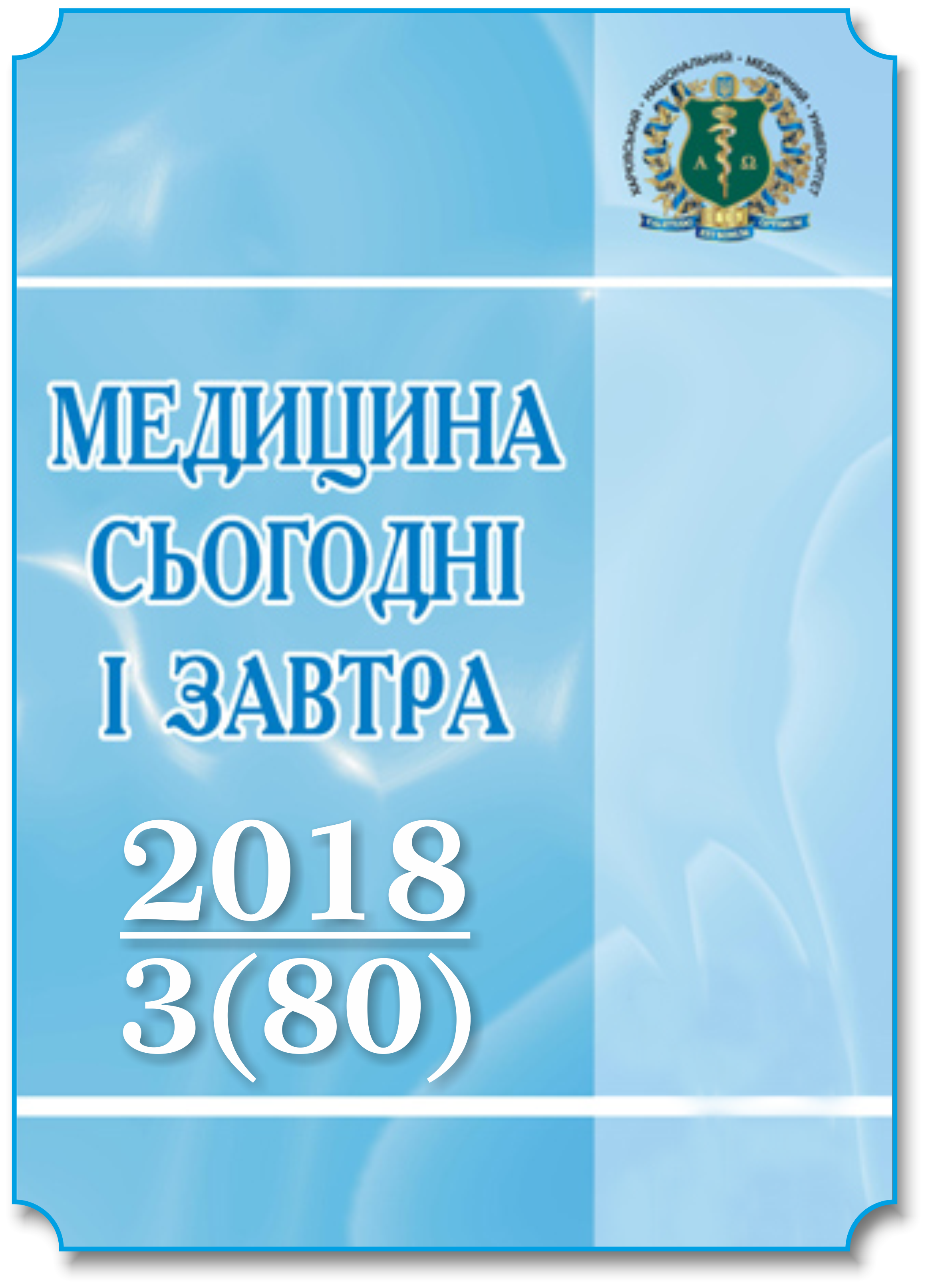Abstract
The peculiarities of the lipid spectrum changes in the dynamics of the fatty load test were determined in hypertensive patients with obesity. All patients with arterial hypertension were divided into two groups depending on the presence of obesity. In patients of both groups fasting lipid spectrum parameters and 6 hours after fat loading were detected. In patients with hypertension in combination with overweight and obesity atherogenic disturbances of the lipid blood transport system tolerance to the fatty load action were revealed, which manifested by steady increase of total cholesterol, triglycerides, low-density lipoprotein cholesterol levels, and by decrease of high-density lipoprotein cholesterol level. In patients with isolated hypertension there was a consistent increase of low-density lipoprotein cholesterol level, and decrease of high-density lipoprotein cholesterol blood level in the postprandial period.
References
Halcox J.P., Banegas J.R., Roy C., Dallongeville J., De Backer G., Guallar E. et al. (2017). Prevalence and treatment of atherogenic dyslipidemia in the primary prevention of cardiovascular disease in Europe: EURIKA, a cross-sectional observational study. BMC Cardiovascular Disorders, vol. 17 (1), pp. 160.
Hyson D., Rutledge J.C., Berglund L. (2003). Postprandial lipemia and cardiovascular disease. Current Atherosclerosis Reports, vol. 5 (6), pp. 437–444.
Iqbal J., Hussain M.M. (2009). Intestinal lipid absorption. American Journal of Physiology, vol. 296 (6), pp. 1183–1194.
Klop B., Elte J.W., Cabezas M.C. (2013). Dyslipidemia in obesity: mechanisms and potential targets. Nutrients, vol. 5 (4), pp. 1218–1240.
Bjorkegren J., Silveira A., Boquist S., Tang R., Karpe F., Bond M.G. et al. (2002). Postprandial enrichment of remnant lipoproteins with apoC-I in healthy normolipidemic men with early asymptomatic atherosclerosis. Arteriosclerosis, Thrombosis, and Vascular Biology, vol. 22 (9), pp. 1470–1474.
Bergmann K. (2010). Non-HDL cholesterol and evaluation of cardiovascular disease risk. EJIFCC, vol. 21 (3), pp. 64–67.
European Association for Cardiovascular Prevention & Rehabilitation, Reiner Z., Catapano A.L., De Backer G., Graham I., Taskinen M.R. et al. (2011). EAS/EAS Guidelines for the management of dyslipidemias: the Task Force for the management of dyslipidaemias of the European Society of Cardiology (ESC) and the European Atherosclerosis Society (EAS). European Heart Journal, vol. 32 (14), pp. 1769–1818.
Turgeon R.D., Anderson T.J., Gregoire J., Pearson G.J. (2017). 2016 Guidelines for the management of dyslipidemia and the prevention of cardiovascular disease in adults by pharmacists. Canadian Pharmacists Journal, vol. 150 (4), pp. 243–250.
Robinson J.G., Wang S., Smith B., Jacobson T.A. (2009). Meta-analysis of the relationship between non-high-density lipoprotein cholesterol reduction and coronary heart disease risk. Journal of the American College of Cardiology, vol. 53 (4), pp. 316–322.
Hoenig M.R. (2008). Implications of the obesity epidemic for lipid-lowering therapy: non-HDL cholesterol should replace LDL cholesterol as the primary therapeutic target. Vascular Health and Risk Management, vol. 4 (1), pp. 143–156.
Patsch J.R., Miesenböck G., Hopferwieser T., Mühlberger V., Knapp E., Dunn J.K. et al. (1992). Relation of triglyceride metabolism and coronary artery disease. Studies in postprandial state. Arteriosclerosis, Thrombosis, and Vascular Biology, vol. 12 (11), pp. 1336–1345.
Dias C.B., Moughan P.J., Wood L.G., Singh H., Garg M.L. (2017). Postprandial lipemia: factoring in lipemic response for ranking foods for their healthiness. Lipids in Health and Disease, vol. 16 (1), pp. 178.
Masuda D., Yamashita S. (2017). Postprandial hyperlipidemia and remnant lipoproteins. Journal of Atherosclerosis and Thrombosis, vol. 24 (2), pp. 95–109.
Higgins V., Adeli K. (2017). Postprandial dyslipidemia: pathophysiology and cardiovascular disease risk assessment. EJIFCC, vol. 28 (3), pp. 168–184.
